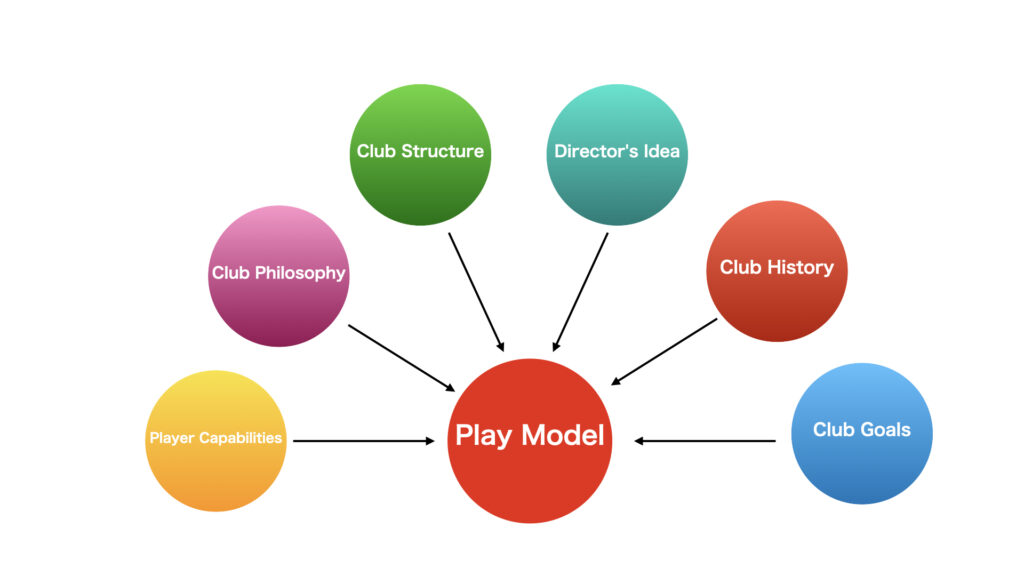In recent years, it has become mainstream in football to create and teach using a play model.
A play model is literally a model of play, verbalizing the principles of play in various situations of a match and court areas.
Since football is a chaotic and difficult sport, fitting it into a model makes it easier for the team to play without hesitation and with a common consciousness.
In Spain, from a young age, players are developed within the national play model, fostering innovative play within restrictions.

The play model of top-tier European clubs, as shown above, is typically created considering the club’s (or country’s) history, objectives, the manager’s ideas, and the players’ abilities.
In the Futsal A-class license (Japan’s top category license), an original play model is created, and practice menus are devised and instructed according to it.
Most competitive teams have a play model
Hearing the content up to this point might make the concept of a play model seem very difficult, but surprisingly, most competitive teams have a play model in a broad sense.
Literally, since a play model is a model of play, formations like 3-1 or 4-0, set-pieces sign play, and defensive guidelines (front press or half, zone or man-to-man) are also parts of the play model.
In other words, even if a team has not formally verbalized it, in many cases, competitive futsal is played fitting into a model without realizing it (tactics are part of the play model).
Since the futsal court is small and the number of players is also small, fitting it into a model increases reproducibility, making this phenomenon inevitable.
Occasionally, the term game model is also seen in books and online, but while these two are slightly different, their goals are the same.
Literally, the game model is primarily based on the game (match), whereas the play model is based on play, but the aim to fit into a model is the same.
Regarding the difference between these two, there has been a long-standing debate, making it a profoundly difficult topic, so it’s okay to think of them as the same for those who find it hard to understand.
There is no one right answer to play models; they evolve
As mentioned earlier, play models are determined by various factors related to the club (team), and there is an original one for each team.
Therefore, there is generally no absolute right answer for the play at that moment, and it is mainstream to think according to the team’s play model.
Furthermore, a play model is not something that is completed once made but should always continue to evolve.
First and foremost, creating a perfect play model at once is not easy, so it should be updated through trial and error, such as coaching.
Besides fundamental factors like rule revisions, trends in tactics and players’ resources, such as changes in times and environments, cannot be ignored.
However, play models are ultimately patternable because they are created based on the rules of futsal and with the aim of winning matches.
This blog objectively explains tactics (models) that are widely used in a systematic manner.
Conclusion
How was it?
In the future, I plan to add to this article about how to create a play model, so it would be great if you could visit again in a few months.